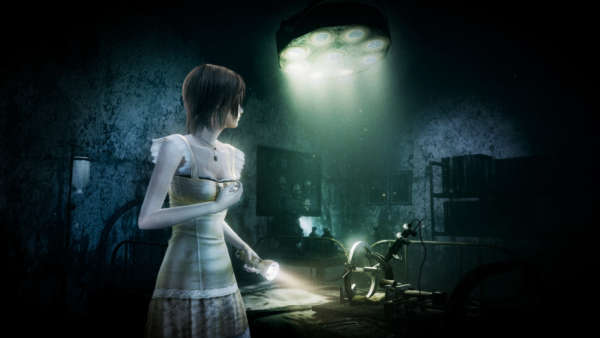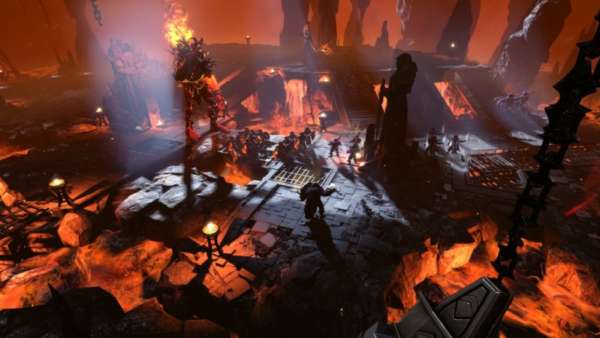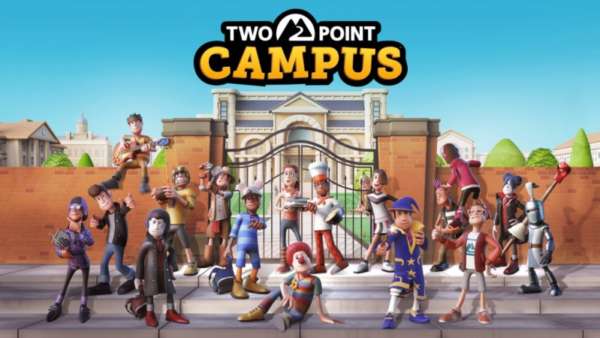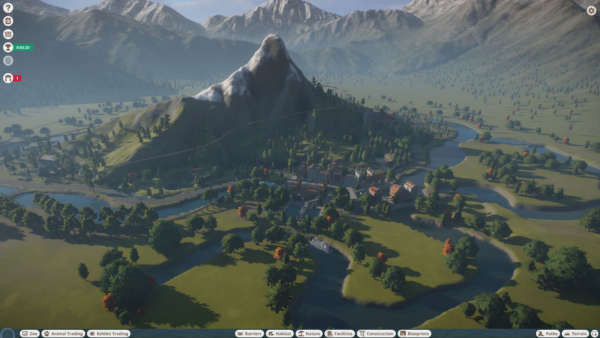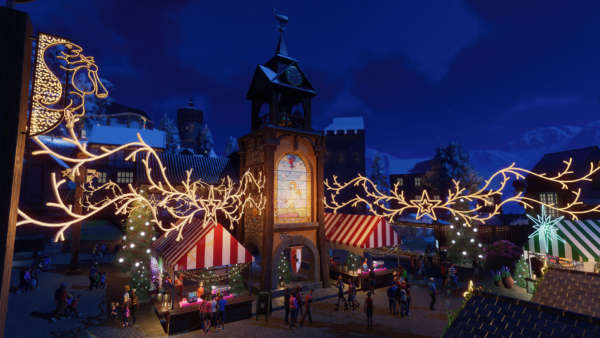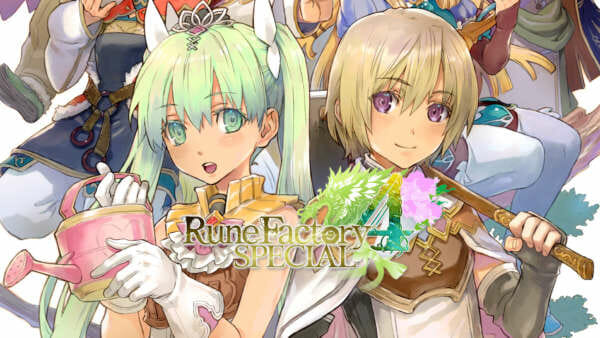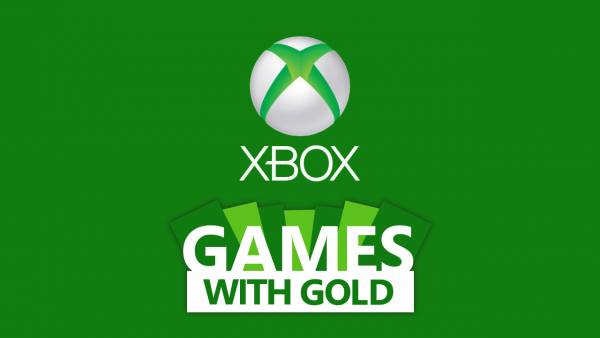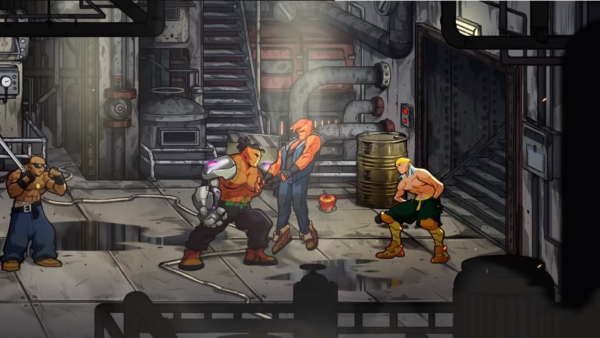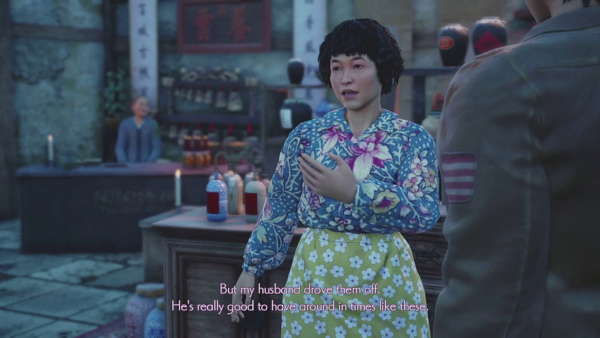In 1990, SEGA created a quaint and enjoyable platformer starring the indomitable Mickey Mouse. Castle of Illusion is fondly looked back upon by gamers who grew up in the 90s, and along with Sonic helped to define the Mega Drive/ Genesis console, and the genre. Featuring quirky levels and a then-unprecedented level of animation, Castle of Illusion was catapulted into the hearts of gamers forever, spawning a series of Disney titles for SEGA that also became much-loved classics in their own right.
23 years later, SEGA Studios Australia has re-opened SEGA’s magic kit, and has lovingly recreated Castle of Illusion with all the trappings of today. Rather than a straight 1:1 remake, Castle Of Illusion instead takes themes and ideas from – and inspired by – the original game, and updates them with new graphics and level designs. This does well by the original while offering a new experience and the game is the better for it.
Of course, the game comes bearing its Mega Drive ancestry from 1990. Castle of Illusion is wholeheartedly a platformer, and in a platformer, movement is arguably the most important aspect of the game. Thankfully the developers nailed it; Mickey responds to your every tap, turn, and twist, and the wise inclusion of d-pad controls makes navigating the environment more about the actual level design than the controls. Mickey is very quick to reach his maximum jump height – he doesn’t float – and the air control is very accommodating. You can control yourself in the air however you like, which is great for making sure you land in the desired place, but it can sometimes be a bit twitchy in places.
In the original game, Mickey used his gluteus maximus to bounce from enemy to enemy, which required that the player press jump a second time after takeoff to activate his butt-bounce. 2013’s Castle of Illusion removes this system and replaces it with something similar but more forgiving. Jumping on any enemy’s head will destroy it, but to make Mickey bounce high, you must still hold the button a second time. It makes the button-sequence almost identical, but doesn’t the damage the player if they don’t get it right. This is a perfect modernising of the bounce mechanic, and is one of many updates done right in this game.
In terms of story, like the original, Castle of Illusion is very simple. Mickey and Minnie are out skipping through life while the evil witch Mizrabel suddenly appears and kidnaps Minnie, so Mickey must get Minnie back by overcoming the titular castle. Mickey must find 7 gems to get to the top of the tallest tower, each of which is hidden in the fantastical worlds behind the castle’s doors.
The level themes exude classic Disney, from the Enchanted Forest to the plastic world of Toyland. These spaces include very simple platforming but remain effective at presenting something fun. The standout stage is easily the Library as it is full of detail, from the jar of sugar cubes, to the way the bookworms (clad in bow ties, no less) tell Mickey to “shh” when he takes damage. The level is almost a character in itself, and it also featuring the debut of a mischievous new foe for Mickey to contend with (which I won’t spoil here). This is followed by the great-looking candy-land stage, which also benefits from an injection of personality – for example, you can see Mickey’s distorted refraction through a giant lollipop or oversized pieces of jelly as you pass behind them.
As for Mickey himself, SEGA have done an excellent job of animating him. His facial expressions and the way he cautiously looks around while ducking or swimming come right out of a Disney cartoon, and his jolly walk when pressing the analog stick half way fits with the happy-go-lucky theme of the game. His ears can sometimes move in a totally unnatural way to keep his silhouette looking right, but this is hardly noticeable.
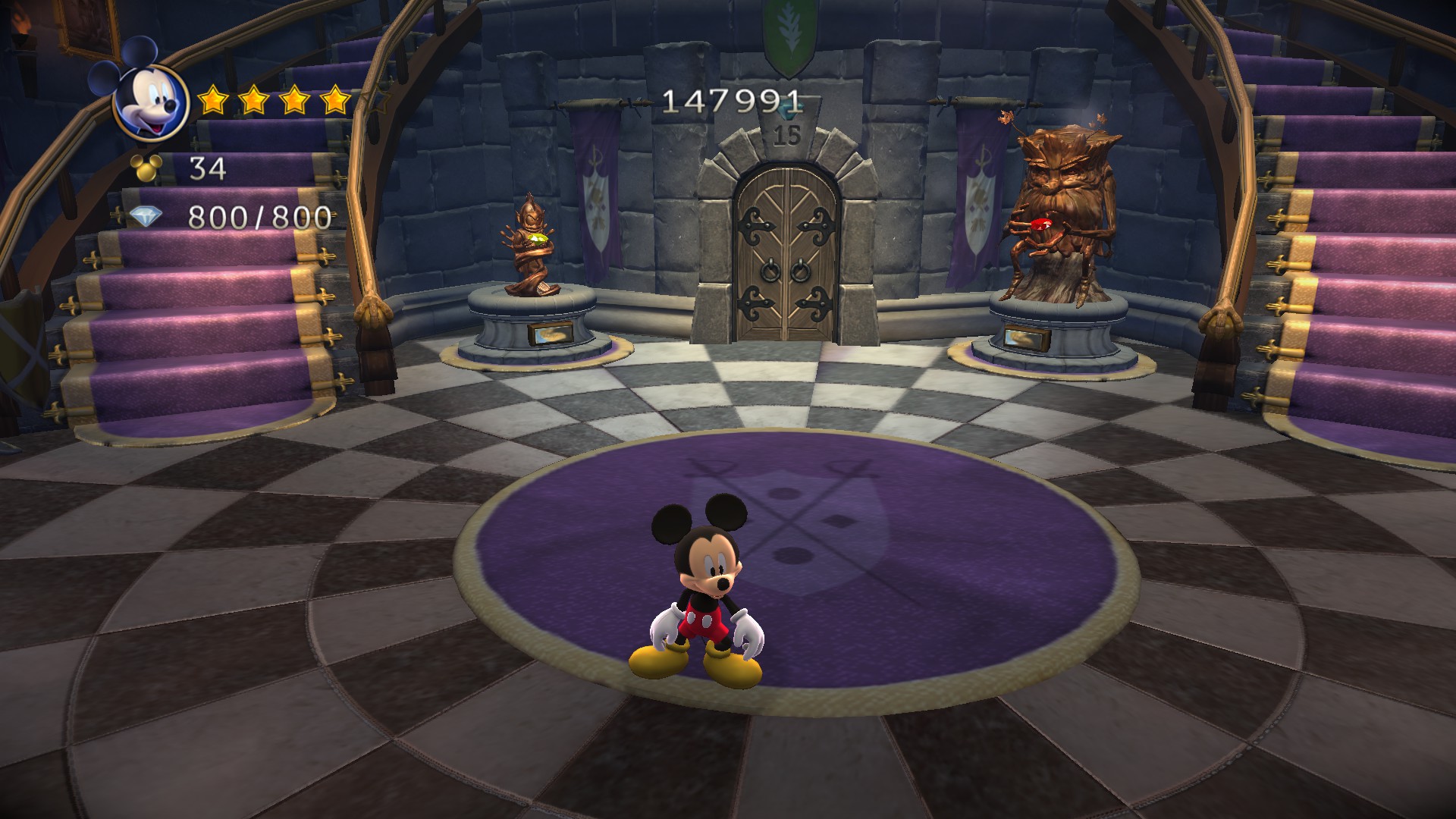
The Castle is now a playable 3D hub world, with paintings , statues, and costumes accessible as you progess
The theme of images, smoke and mirrors, magic tricks, illusions and sleight-of-hand – permeates the game. It’s almost as if the developers are magicians, presenting their grand illusions for you to try and decipher. There are several set-pieces not seen in the original which capitalise on the idea of mischief and mystery, with one particularly memorable moment involving a mirror. A lot of effort has clearly gone into these levels, which are full of little touches, such as the way the bosses can be spotted hiding in the background during their stages.
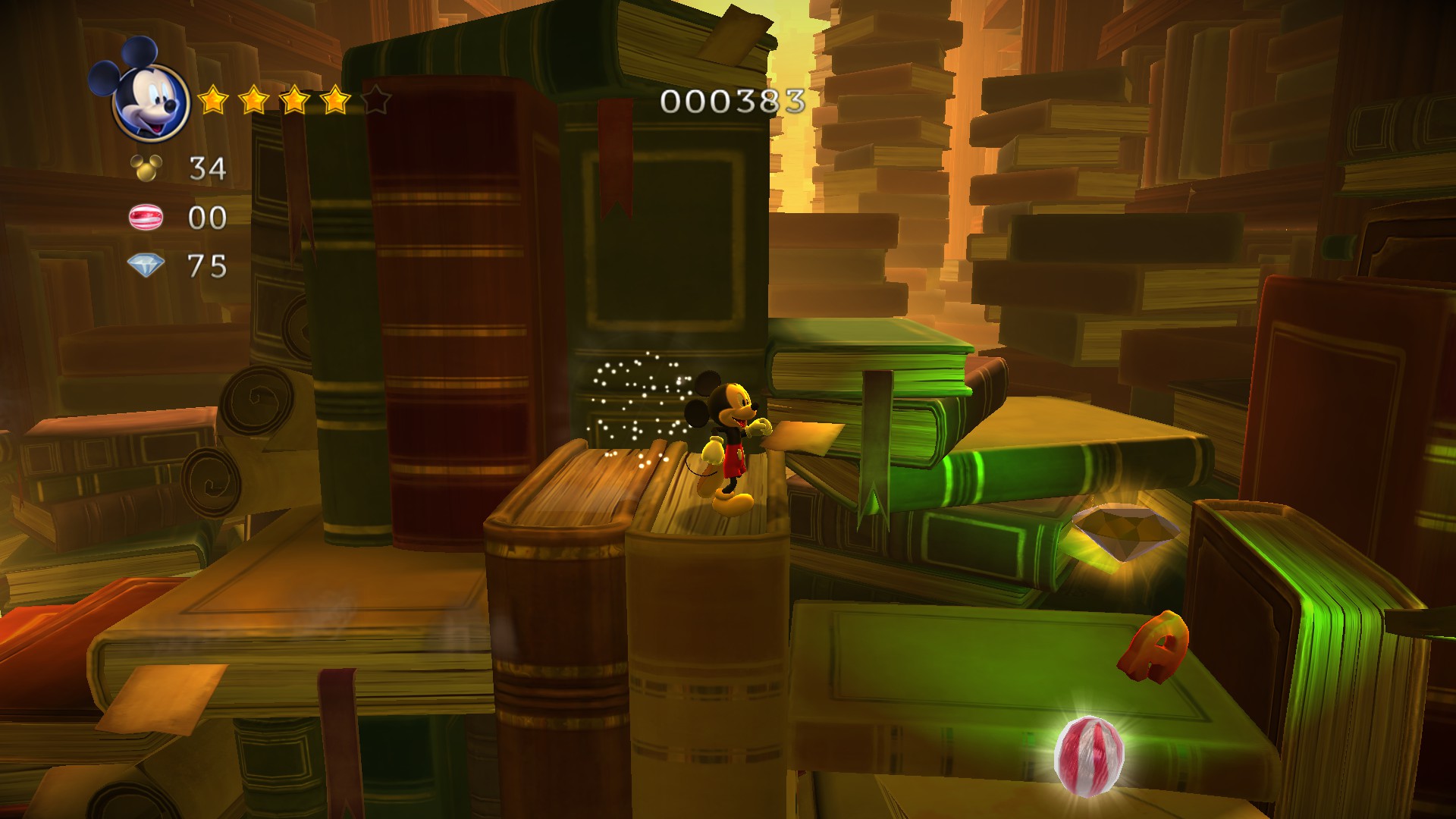
The Library is one of the game’s standout levels
The game has a very short campaign, and if you want to simply blast through the game as quickly as possible you can do so very quickly. It’s reasonable to expect completion in one sitting, but the developers have seen fit to include an array of secrets. Hidden throughout the stages are Diamonds, Playing Cards, Chili Peppers, and Statue Pieces for you to collect. These things unlock extra content such as character bios and concept art, but it’s also worth finding everything in the game just to see how sneakily the developers hid them all. You can also unlock costumes for Mickey that are themselves references to the other classic Disney games from the era, which fans will be pleased to see.
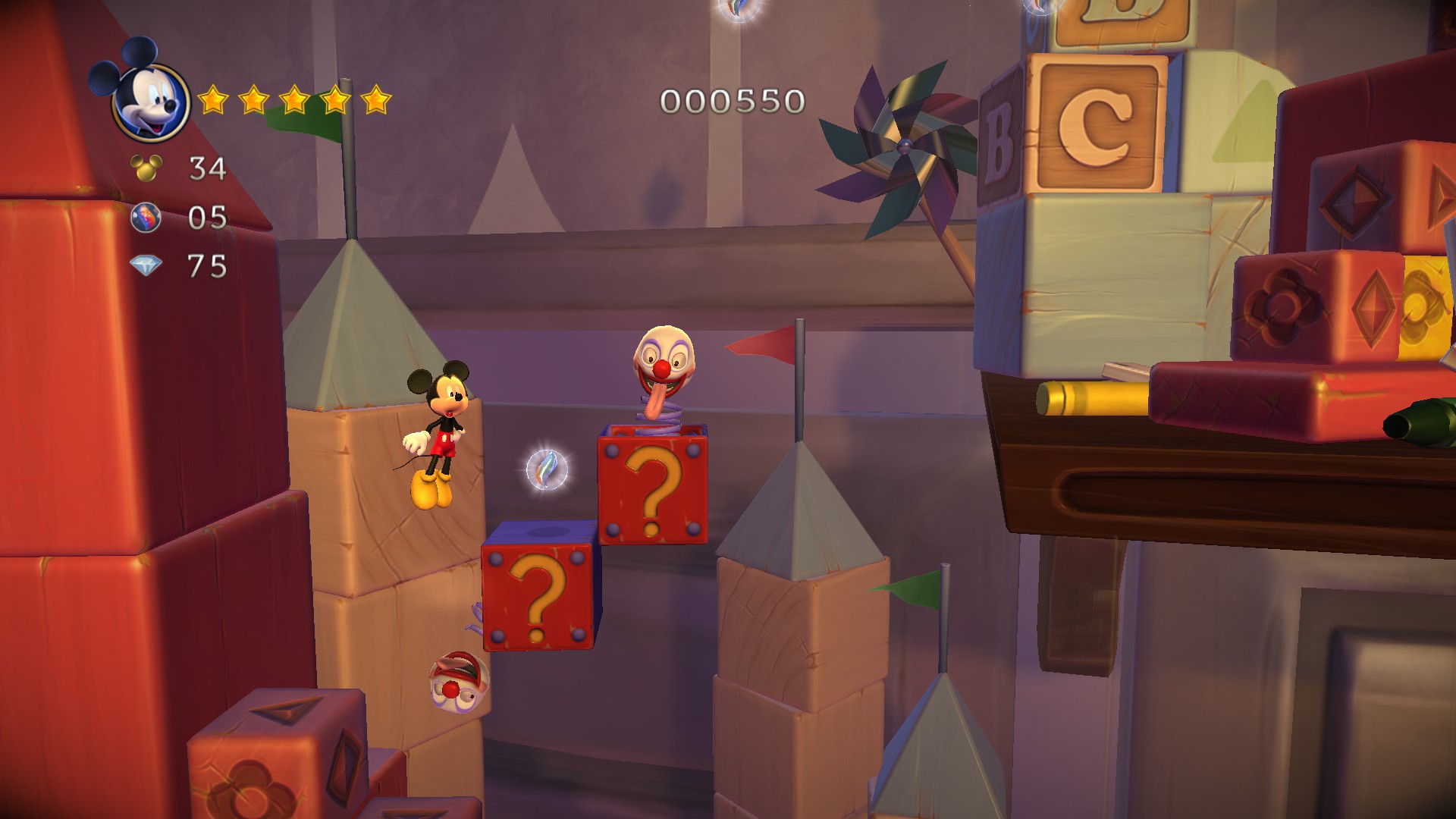
Bouncing on certain enemies will often send Mickey to a new secret area, which you’ll definitely want to do to find every statue piece or magic playing card
On the audio side of things, Castle of Illusion presents a whimsical orchestral score composed by none other than Grant Kirkhope, who composed such classic titles as Banjo-Kazooie. Some of the game’s original tracks have been given a modern upgrade, but others have been replaced completely. Criminally, there is not a remix of the original game’s “The Storm” theme, with Kirkhope’s new score instead presenting an entirely different melody. Also included is some narration, which adds to the storybook atmosphere. While some of the writing is hit and miss, the narration is generally OK. An option has been included to turn it off, as well as the option to play the original game’s 16-bit soundtrack. For some reason, this requires a quit out to the main menu, and is applied to all stages. It would have been great to customise the soundtrack on a per-level basis, but this is a minor nitpick.
At £9.99, it’s the perfect price if you’re willing to spend some time with the game. It might be a little on the short side, but if you grew up on the original, you owe it to yourself to play this fitting tribute that’s brimming with that old Disney – and SEGA – magic. If you didn’t, you should still at least give it a go, as it’s a charming and delightful little gem.
